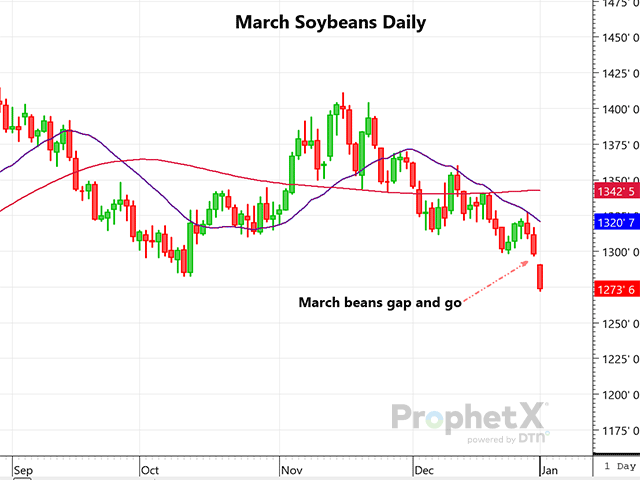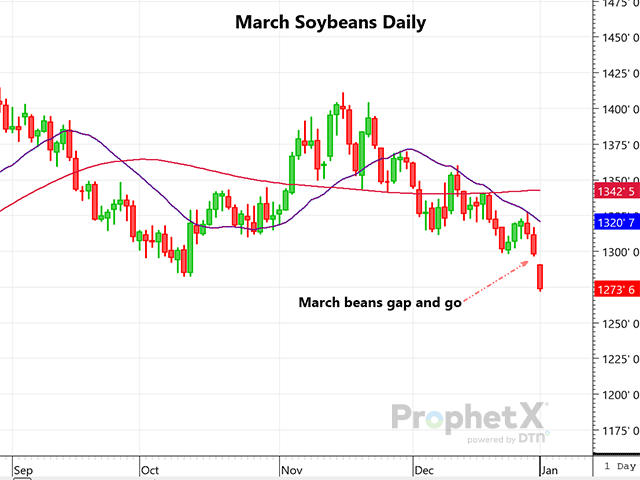Technically Speaking
Soybeans Gap Sharply Lower on Good Brazil Weekend Rain and More to Come
Despite the unusual weather pattern in Brazil, which saw extreme heat and dryness envelop the northern two-thirds of the country, and heavy rains and flooding in the south, the recent and ongoing wetter pattern had traders turn more bearish on that country's soy yield potential. While some of the primary soy producing regions of Brazil, including Mato Grosso, Mato Grosso do Sul, Goias, and Bahia were reported to have moisture deficits of as much as 30% to 50% of normal, recent wetter forecasts and the actual rain which fell over the long New Year's holiday has traders in a bearish mood.
Despite the USDA soy estimate being some 8 million metric tons (mmt) to 12 mmt above where some private crop scouts and analysts are predicting, it is possible the change in weather, should it last, could enhance yield potential enough to produce another record or near record soy crop. If the USDA 161-mmt estimate were to come to fruition along with the 48-mmt estimate for Argentina, which remains in great shape, then the combined production for Brazil and Argentina would be roughly 26 mmt (955 million bushels) higher than last year, giving the U.S. plenty of competition on soy and product exports. It would appear the next level of support for March soybeans would be down around $12.50. The only saving grace is that the soy market is approaching the oversold zone.
P[L1] D[0x0] M[300x250] OOP[F] ADUNIT[] T[]
As in soybeans, spot March corn futures are falling on the first day of 2024, pressured by the wetter pattern change in Brazil that began in the past week. Although March corn didn't gap lower, it set a new contract low and possibly began a new leg down. Also, as in soybeans, the market is approaching the oversold zone.
Unlike soybeans, corn demand has been stout, with export sales 36% ahead of last year, and last week's ethanol production rose to the highest level since 2021. However, corn ending stocks are expected to be the highest in five years. While the USDA is carrying the highest corn production estimate for Brazil, if USDA's Brazil and Argentine estimates are even close to correct we could see combined Brazil and Argentine corn production rise by as much as 8 mmt to 10 mmt above last year. The day is young, but it sure looks like traders have turned more bearish to begin the new year, and funds are adding to an already large net short in corn.
**
Comments above are for educational purposes only and are not meant as specific trade recommendations. The buying and selling of commodities, futures or options involve substantial risk and are not suitable for everyone.
Dana Mantini can be reached at Dana.Mantini@DTN.com
Follow him on X, formerly Twitter, @mantini_r
(c) Copyright 2024 DTN, LLC. All rights reserved.






Comments
To comment, please Log In or Join our Community .